Politics
L.A. Times and consumer group ask judge to unseal records in DWP scandal
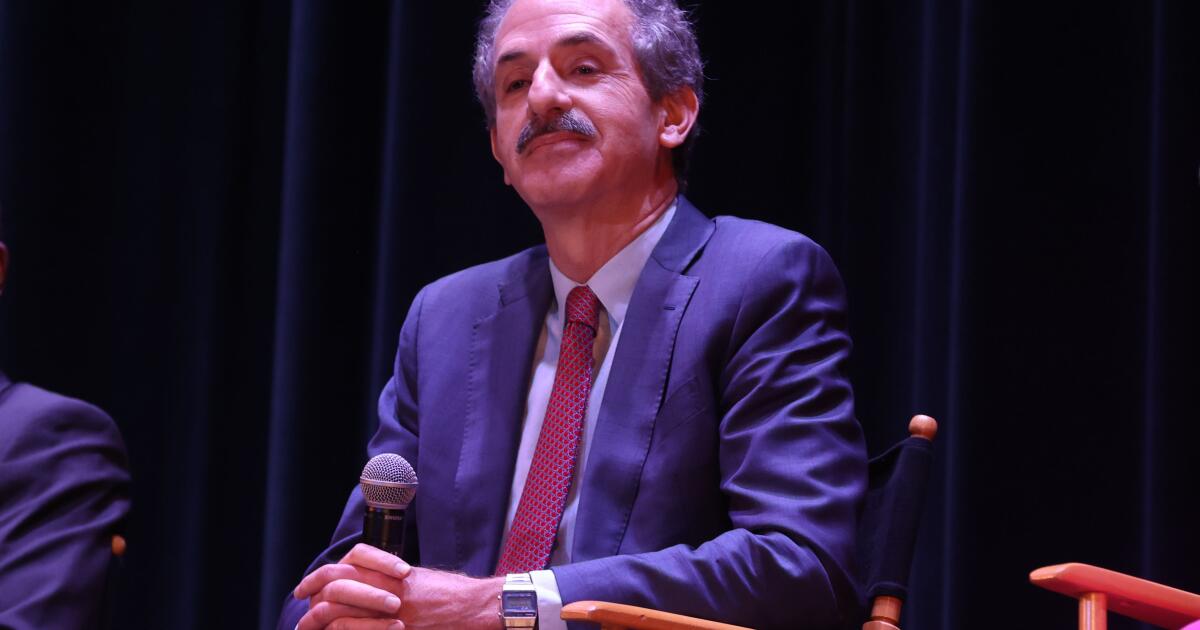
The Times and Consumer Watchdog has asked a federal court to unseal evidence related to the criminal investigation of former City Atty. Mike Feuer’s office and the Department of Water and Power.
The Times and the consumer advocacy group filed an application Wednesday seeking to make public 33 search warrants, affidavits and other documents in the government’s case.
Jerry Flanagan, legal director for Consumer Watchdog, said the law clearly states the public has a right to documents when a government criminal investigation has finished.
Flanagan said the documents will shed more light on the scandal, called an “incredibly sordid affair” last year by U.S. District Judge Stanley Blumenfeld Jr., who is overseeing the criminal case.
The application, filed by The Times and Consumer Watchdog in the U.S. District Court’s Central District, also states the public has a right to know “whether or not Mr. Feuer bears culpability for the scandal.” Feuer, the former city attorney, is running for the 30th Congressional District seat being vacated by Rep. Adam B. Schiff (D-Burbank). Feuer is among the top fundraisers in the race.
Prosecutors last year confirmed that their probe into illicit city contracts and a sham lawsuit involving the DWP was over.
Four people, including three top city employees, pleaded guilty to various crimes in a scandal centered around a 2015 class-action lawsuit filed by DWP customers.
Prosecutors said that an attorney working for Feuer’s office wrote the lawsuit and then handed it to an opposing attorney, who filed it against the city.
The goal was to quickly settle numerous claims filed by DWP customers, who were grossly overcharged by a new billing system, prosecutors said.
Several individuals, who go unnamed in prosecutors’ court documents, were alleged to have known about or taken part in various schemes but weren’t charged.
More questions were raised when onetime attorney Paul Paradis, who ghost-wrote the lawsuit filed against the city and admitted taking a kickback, told a federal judge in November that an FBI agent testified in two affidavits that Feuer perjured himself before a federal grand jury. Feuer also made false statements to the FBI, Paradis said.
Feuer has long denied wrongdoing. Reached Wednesday, Feuer pointed to the letter that he was sent in 2022 by the U.S. attorney’s office that said he wasn’t being investigated.
“That letter continues to speak for itself,” said Feuer, who declined to say whether he supports unsealing the documents.
The application filed by The Times and Consumer Watchdog also says the documents are “essential” to “monitor the charging decisions” of the U.S. attorney’s office.
“The public has a strong interest in assessing why prosecutors made the limited charging decisions they did,” the application says, “particularly where those decisions were made about highly influential and powerful public officials who were not charged, while lower ranking officials were charged.”
Attorneys for the two entities began meeting with the U.S. attorney’s office in January to discuss access to the documents.
The process was still underway last week, but “unfortunately, we were not able to reach an agreement,” Flanagan said.
Thom Mrozek, a spokesperson for the U.S. attorney’s office in Los Angeles, declined to comment.
Mrozek told The Times last year that prosecutors didn’t pursue additional criminal charges in the case when the “evidence did not establish every element of a federal offense beyond a reasonable doubt.”
Paradis supports unsealing the documents, his attorneys said Thursday.
The attorneys cited prosecutors’ own words in the criminal case in a statement to The Times.
“As stated by the United States Attorney’s Office in open court, it is ‘in the government’s prerogative to be as transparent as possible’ and ‘the public certainly deserves to know’ the truth and extent of the corrupt acts committed by city officials,” Scheper and Steinfeld said.

Politics
How Johnson pulled off another impossible win with just 1-vote margin on $9.4B spending cut bill
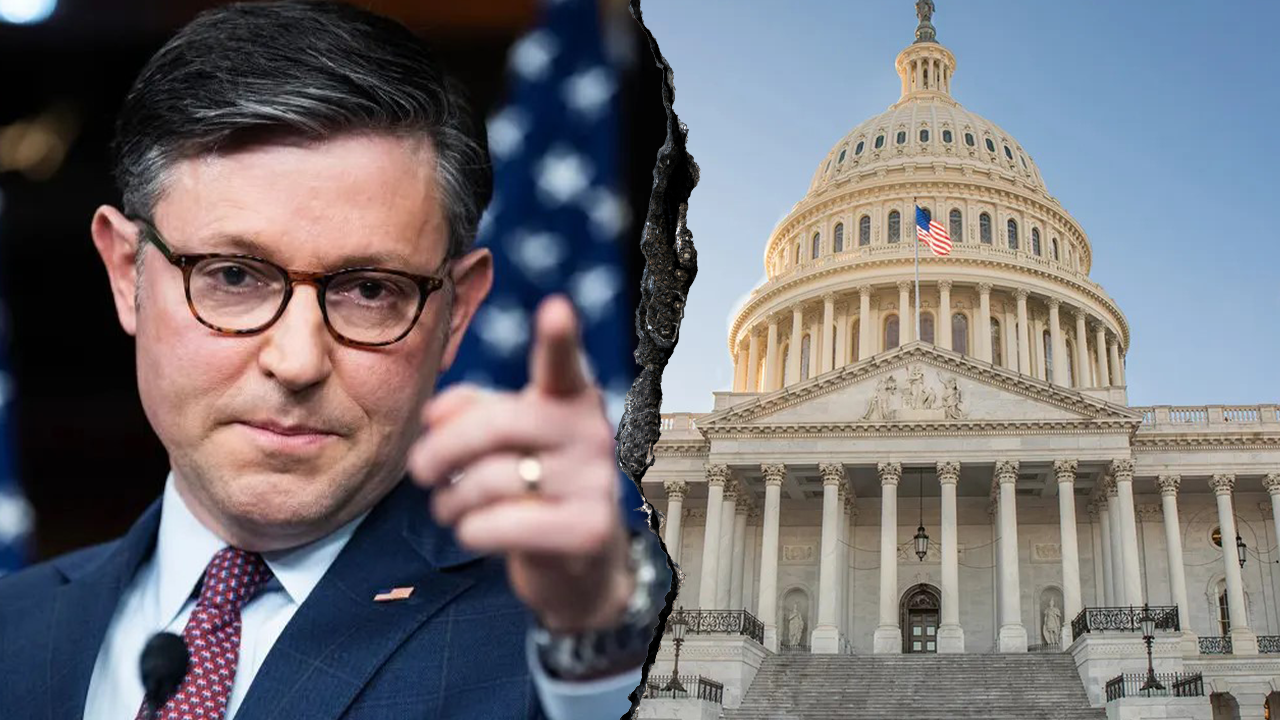
NEWYou can now listen to Fox News articles!
It came down to one vote last Thursday afternoon.
Again.
That’s often the case in the House of Representatives. The GOP sports a modest eight-vote margin in the House. 220-212 with three vacancies. Republicans can only lose three votes and still pass a bill without Democratic assistance.
REPORTER’S NOTEBOOK: WHY THE SENATE IS UNLIKELY TO DEBATE THE ‘BIG, BEAUTIFUL BILL’ UNTIL NEXT WEEK
Capitol Building, NPR, PBS (llison Robbert/Bloomberg via Getty Images; Eva Marie Uzcategui/Bloomberg via Getty Images)
And when the House closed the roll call, lawmakers voted 214-212 to strip USAID and public broadcasting of $9.4 billion. This was the first “rescissions” bill by the House. An effort to claw back money which lawmakers just green-lit in March. But flip one vote, and the measure would have collapsed. A 213-213 vote doesn’t get it. By rule, ties fail in the House.
The bill represented the first chance for the GOP to make good on proposed cuts from DOGE. From a constitutional standpoint, DOGE can only recommend cuts. Congress has authority over spending. That means lawmakers must vote on every dollar. Lawmakers appropriated the money, but they must also vote to take it back.
No vote, no cuts. It’s that simple.
SENATE GOP CAREFULLY WEIGHING CONTROVERSIAL TAX PROVISIONS BEFORE BRINGING BIG, BEAUTIFUL BILL TO THE FLOOR
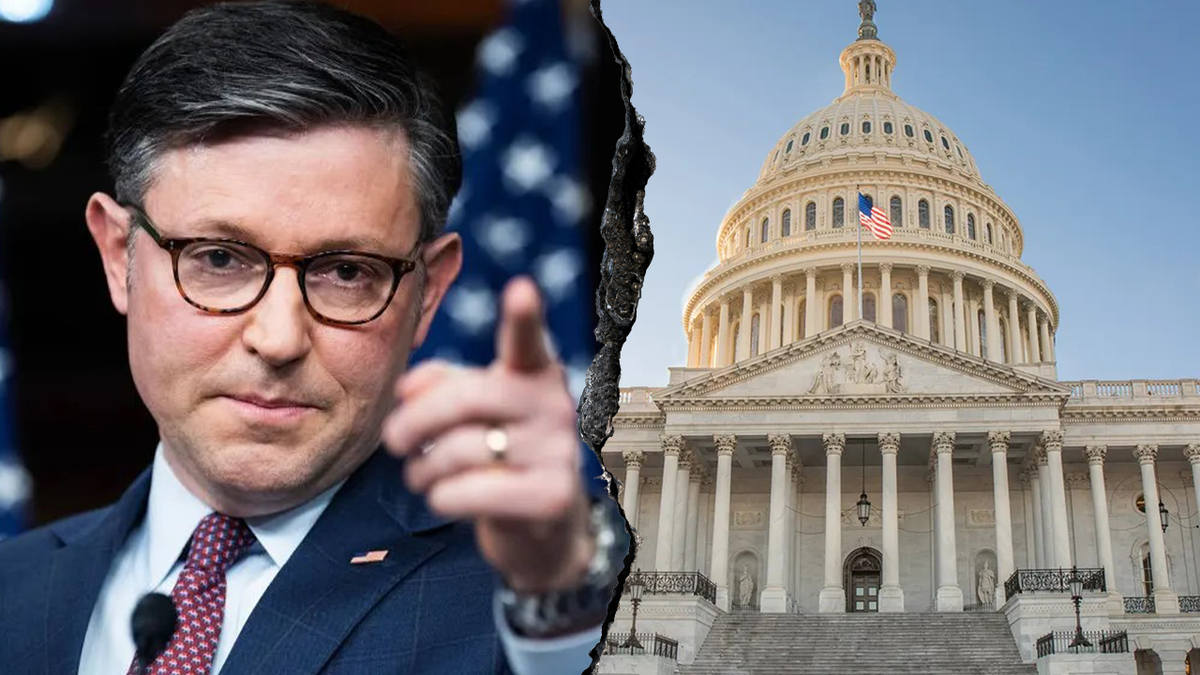
Speaker of the House Mike Johnson, left, and U.S. Capitol Building, right (Getty)
Earlier in the day on Thursday, it was unclear whether congressional Republicans had the votes to approve the spending cancellation package. It’s known as a “rescissions” bill because it “rescinds” money already approved by Congress. But the stakes for this bill were hard to understate for the GOP. Republicans crow a lot about cutting spending and reducing the deficit. But unless you can actually pass a bill to cut spending, talk is cheap.
And government programs are expensive.
All of official Washington would have trained its attention on the House floor late Thursday afternoon to see how Republicans fared with the spending cancellation request. But the shocking video of the feds tangling with Sen. Alex Padilla, D-Calif., and handcuffing him quickly consumed every cubic centimeter of news oxygen.
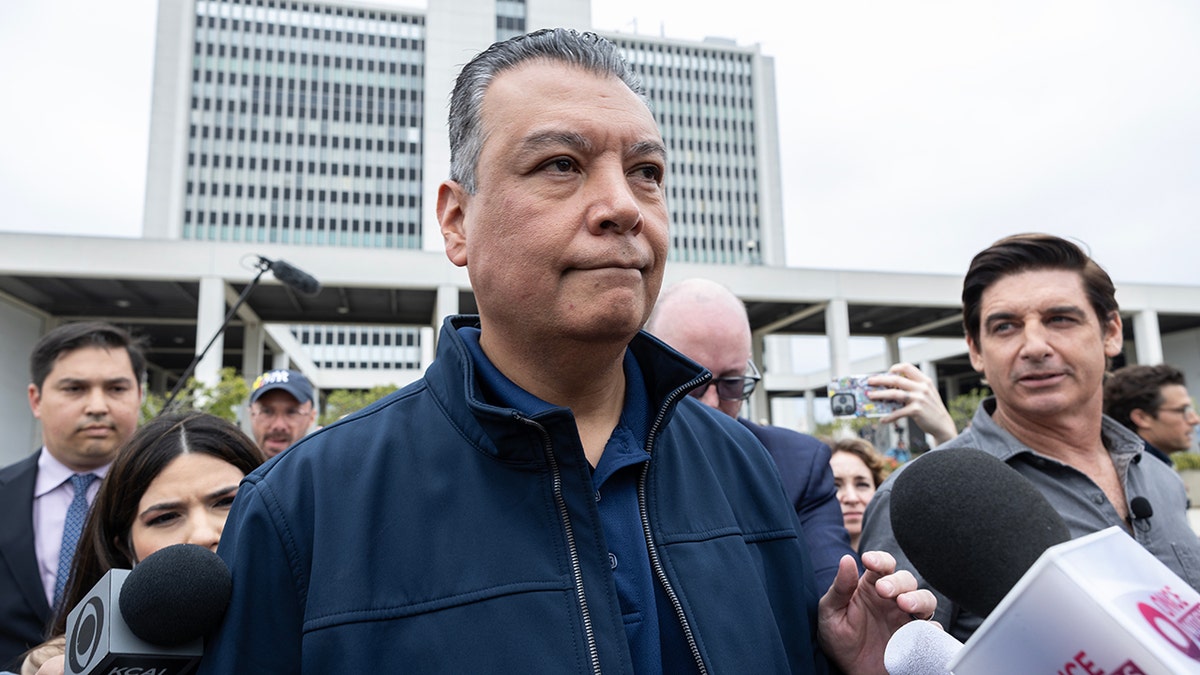
Sen. Alex Padilla speaks during a press conference at the Federal Building on Wilshire Blvd Thursday, Jun. 12, 2025, in Los Angeles. (Luke Johnson / Los Angeles Times via Getty Images)
The Congressional Hispanic Caucus and California Democrats planned to march to the office of Senate Majority Leader John Thune, R-S.D. A cavalcade of angry Democratic senators seized the Senate floor, excoriating the Trump Administration’s tactics and demanding action from Thune and House Speaker Mike Johnson, R-La. A wild scene erupted in the House Oversight Committee. Rep. Maxwell Frost, D-Fla., demanded that Oversight Committee Chairman James Comer, R-Ky., commit to subpoenaing Homeland Security Secretary Kristi Noem after the Padilla fracas.
“Will you just shut up!” implored Comer of Frost. “Just shut up! Shut up!”
“You’re not going to tell me to shut up!” bellowed Frost.
“He’s been arrested as a former Antifa member,” piled on Rep. Marjorie Taylor Greene, R-Ga.
You see why it was hard for the press corps to concentrate on the rescissions vote.
But back to the House floor.
The bill was heading to defeat midway through the roll call. Six Republicans posted nay votes on the board.
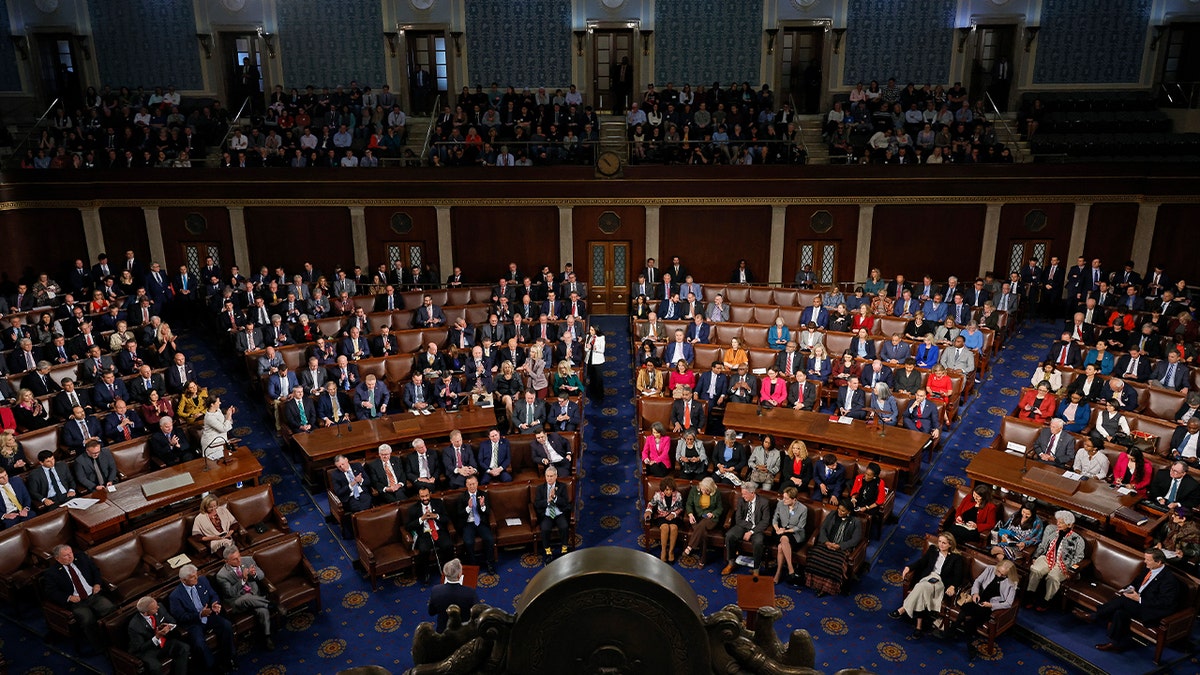
House of Representatives (Chip Somodevilla)
Rep. Nicole Malliotakis, R-N.Y. was among them. She told reporters her constituents supported public broadcasting. And she didn’t like the mechanics of the administration sending a request to Congress to rub out spending.
“I think this does give too much discretion to the White House to make cuts when we are the House that has the power of the purse,” said Malliotakis. “And I’ve seen some of the cuts, as I’ve said in the past, the World Trade Center Health program, the Women’s Health program. These are things that we had to go fight and get restored.”
But there were huddles on the floor during the vote itself. Rep. Nick LaLota, R-N.Y., chatted with Johnson and House Majority Whip Tom Emmer, R-Minn. A few moments later, LaLota and Rep. Don Bacon, R-Neb., who was a no, switched their ballots to yes.
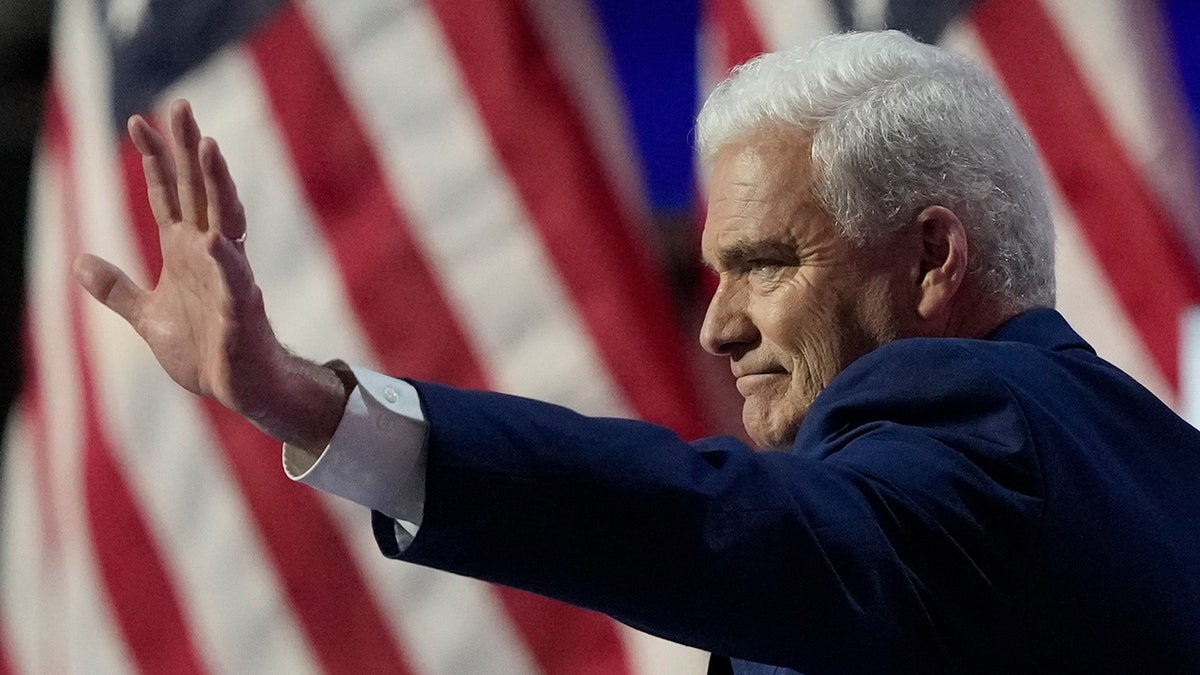
Rep. Tom Emmer speaks during the Republican National Convention Tuesday, Jul. 16, 2024, in Milwaukee. (AP Photo/Charles Rex Arbogast)
Republicans gaveled the vote closed at 214-212.
“I ultimately voted yes after a conversation or two with the Speaker and the Whip raised my confidence level,” said LaLota. “I trust those two individuals. We’ve dealt with each other for the last couple of years. We’ve gotten on the same page.”
Bacon had spoken glowingly in recent days about his relationship with public broadcasters in Nebraska. He also had reservations about cutting PEPFAR, the global AIDS mitigation effort. But now Bacon didn’t fry his party.
“I was assured that PBS would receive funding in this year’s budget. And I discussed PEPFAR with the speaker,” said the Nebraska Republican.
A few moments later, Johnson was outside the House chamber, bragging about his colleagues for passing the bill.
“We are fulfilling the promises we made to the American people,” said Johnson. “Today’s passage of this initial rescissions package marks a critical step towards a more responsible and transparent government that puts the interests of the American taxpayers first.”
Failing to pass this teardrop of spending reductions amid a deep federal sea would have been catastrophic for the GOP. Again, especially because of all the braggadocio about cutting spending. Now Republicans can focus on bigger and more controversial spending cut requests from the Trump administration.
But few reporters cared much about what Johnson had to say at that moment because of the immediate mania involving Padilla. The Capitol descended into chaos. The outcome of the critical vote was relegated to a footnote on a wild news day. By nightfall, no one was talking about the rescissions package at all. Let alone Padilla.
Despite the staggering news traffic, the vote notched yet another narrow victory for Johnson and House Republicans. Like it or not, Johnson has piloted the fractious House Republican Conference to a series of slim victories on tough bills all year long.
In February, the House narrowly approved its initial framework for the Big, Beautiful Bill. The outline was essential to help ease eventual passage in the Senate. At one point, it looked like Republicans lacked the votes. In fact, House leaders began sending Members home for the night. Then, they suddenly reversed themselves. Johnson and the GOP eked out a 217-215 victory, approving the framework and sending it to the Senate.
Switch one vote, and the gig was up. The House and Senate would not be on the same page with a budget framework for the touchstone of President Trump’s agenda. That would neutralize the entire exercise.
A few weeks later, the House approved an interim spending bill to avoid a government shutdown, 217-213. Again a narrow vote. Only Rep. Thomas Massie, R-Ky., voted nay. Flip two votes and the tally is 215-215. Again, a tie vote kills the bill.
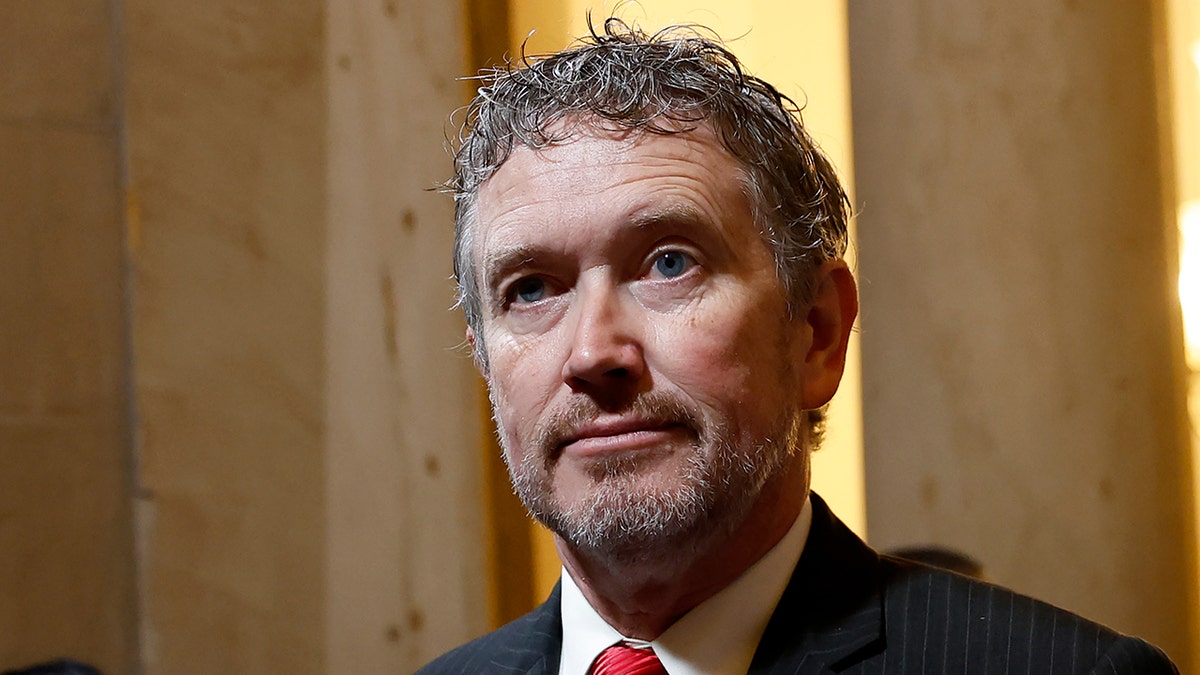
Rep. Thomas Massie attends the inauguration of U.S. President-elect Donald Trump in the Rotunda of the U.S. Capitol on Jan. 20, 2025, in Washington. (Kevin Dietsch/Getty Images)
The Senate okayed one framework for the Big, Beautiful Bill in February. Another one in the spring. But the House and Senate still weren’t on the same page. In mid-April, the House and Senate finally aligned. The House adopted the Senate’s final blueprint for the Big, Beautiful Bill, 216-214. Massie and Rep. Victoria Spartz, R-Ind., voted nay. Again, change one vote and it’s a tie. Defeat would have stalled the process for the Big, Beautiful Bill.
Finally, Johnson and the GOP scored perhaps their biggest win of the year in mid-May. The House voted 215-214 with one member voting “present” to pass the initial version of the Big, Beautiful Bill and send it to the Senate. Rep. Andrew Garbarino, R-N.Y., had problems with the bill. But missed the vote because he fell asleep as the House debated the measure in the middle of the night. House Freedom Caucus Chairman and Rep. Andy Harris, R-Md., also had reservations. But he cast the “present” vote. Either of these members could have tanked the legislation had they voted nay.
Former House Speaker Nancy Pelosi, D-Calif., was the master at lugging challenging votes across the finish line by a vote or two. She’s the reason Obamacare passed. But Pelosi often had larger majorities. Her secret sauce was understanding what members needed to vote yes on controversial legislation.
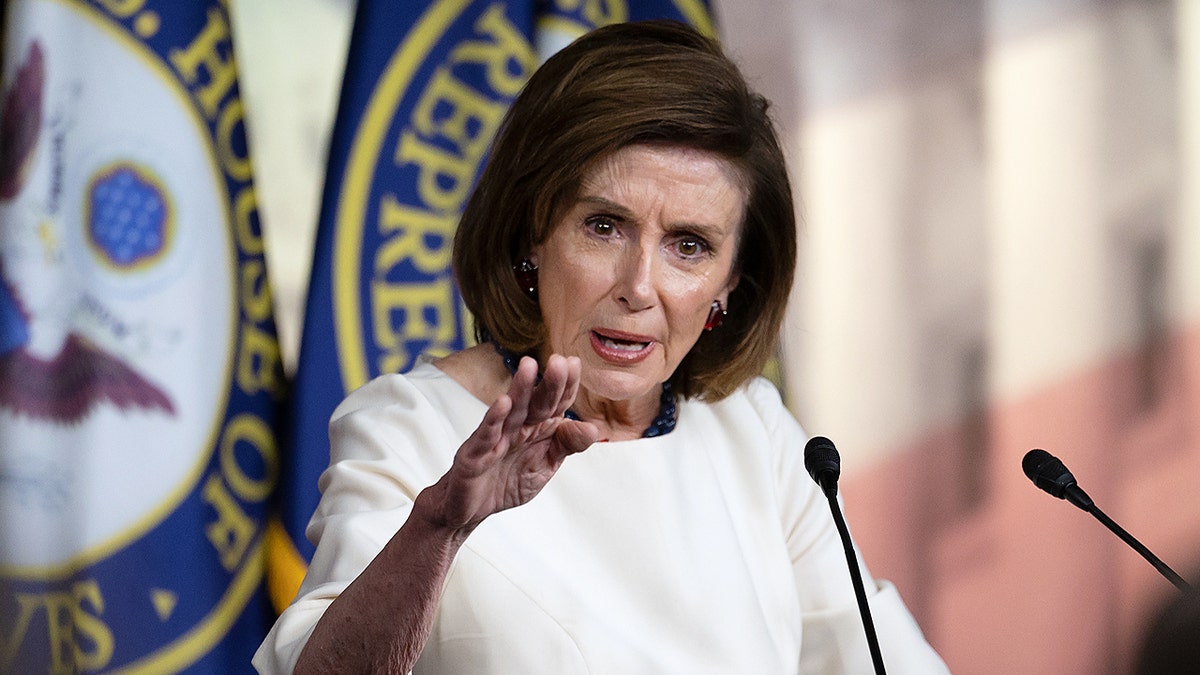
Former House Speaker Nancy Pelosi, a Democrat from California, speaks during a news conference at the U.S. Capitol in Washington on Thursday, Nov. 4, 2021. (Craig Hudson/Bloomberg via Getty Images)
The speaker has Trump on his side and a GOP conference that is willing to do practically whatever he wants. That helps a lot. But Johnson’s resume of pushing through tough bills by the tiniest of margins is beginning to mirror Pelosi’s success. However, the level of difficulty is higher for Johnson thanks to the minuscule majority.
Pelosi was a parliamentary maestro when she was Speaker. And so far during his speakership, Johnson has defied political gravity. But whether you like Johnson’s politics or not, keen political observers are noticing that he has a knack for pulling off the seemingly unachievable. That was long the calling card of Pelosi.
And it may eventually prove to be the calling card of Johnson, too.
Politics
We set a big chunk of California wilderness on fire. You're welcome

HOPLAND, Calif. — On a sun-kissed hillside in remote Northern California, I watched in awe as a crackling fire I’d helped ignite engulfed a hillside covered in tall, golden grass. Then the wind shifted slightly, and the dense gray smoke that had been billowing harmlessly up the slope turned and engulfed me.
Within seconds, I was blind and coughing. The most intense heat I’d ever felt seemed like it would sear the only exposed skin on my body: my face. As the flames inched closer, to within a few feet, I backed up until I was trapped against a tall fence with nowhere left to go.
Alone in that situation, I would have panicked. But I was with Len Nielson, chief of prescribed burns for the California Department of Forestry and Fire Protection, who stayed as cool as the other side of the pillow.
Like a pilot calmly instructing passengers to fasten their seat belts, Nielson suggested I wrap the fire-resistant “shroud” hanging from my bright yellow helmet around my face. Then he told me to take a few steps to the left.
And, just like that, we were out of the choking smoke and into the gentle morning sunlight. The temperature seemed to have dropped a few hundred degrees.
“It became uncomfortable, but it was tolerable, right?” Nielson asked with a reassuring grin. “Prescribed fires are a lot about trust.”
Dripping gasoline onto dry grass and deliberately setting it ablaze in the California countryside felt wildly reckless, especially for someone whose job involves interviewing survivors of the state’s all too frequent, catastrophic wildfires. But “good fire,” as Nielson called it, is essential for reducing the fuel available for bad fire, the kind that makes the headlines. The principle is as ancient as it is simple.
Before European settlers arrived in California and insisted on suppressing fire at every turn, the landscape burned regularly. Sometimes lightning ignited the flames; sometimes it was Indigenous people using fire as an obvious, and remarkably effective, tool to clear unwanted vegetation from their fields. Whatever the cause, it was common for much of the land in California to burn about once a decade.
“So it was relatively calm,” Nielson said, as the flames we’d set danced and swirled just a few feet behind him. “There wasn’t this big fuel load, so there wasn’t a chance of it becoming really intense.”
With that in mind, the state set an ambitious goal in the early 2020s to deliberately burn at least 400,000 acres of wilderness each year. The majority of that would have to be managed by the federal government, since agencies including the U.S. Forest Service, the Bureau of Land Management and the National Park Service own nearly half of the state’s total land. And they own more than half of the state’s forests.
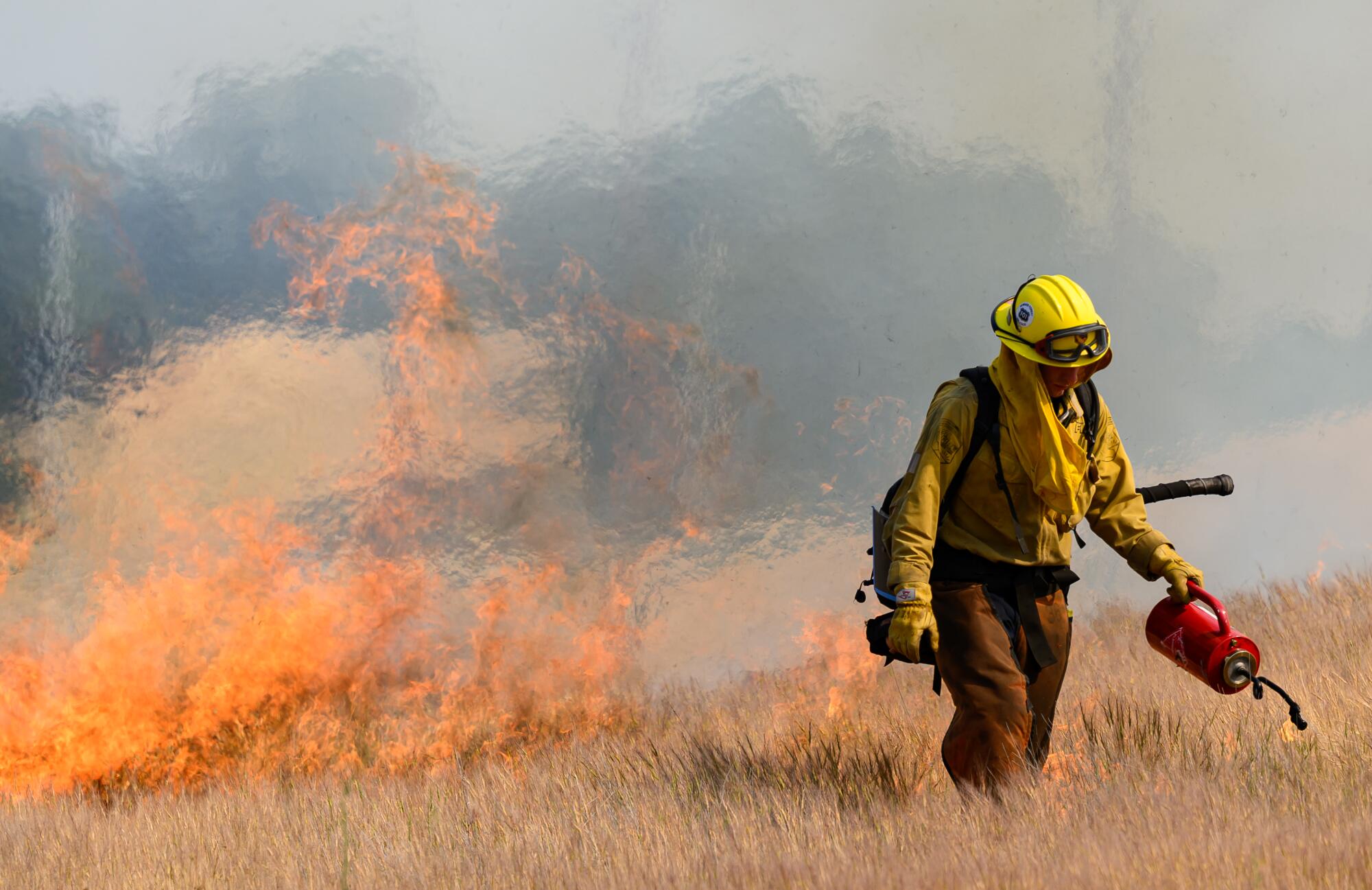
Cal Fire crew members set a prescribed burn near Hopland in Mendocino County.
(Josh Edelson / For The Times)
But California officials worry their ambitious goals are likely to be thwarted by deep cuts to those federal agencies by Elon Musk’s budget-whacking White House advisory team, dubbed the Department of Government Efficiency, or DOGE. In recent months, the Forest Service has lost about 10% of its workforce to mass layoffs and firings. While firefighters were exempt from the DOGE-ordered staffing cuts, employees who handle the logistics and clear the myriad regulatory hurdles to secure permission for prescribed burns were not.
“To me, it’s an objective fact that these cuts mean California will be less safe from wildfire,” said Wade Crowfoot, California’s secretary of natural resources. He recalled how President Trump, in his first term, erroneously blamed the state’s wildfires on state officials who, Trump said, had failed to adequately “rake” the forests.
“Fifty-seven percent of our forests are owned and managed by the federal government,” Crowfoot said. If anybody failed, it was the president, he argued.
Larry Moore, a spokesman for the U.S. Department of Agriculture, which oversees the Forest Service, said the job cuts won’t affect the agency’s fire prevention efforts.
The Forest Service “continues to ensure it has the strongest and most prepared wildland firefighting force in the world,” Moore wrote in an email. The agency’s leaders are “committed to preserving essential safety positions and will ensure that critical services remain uninterrupted.”
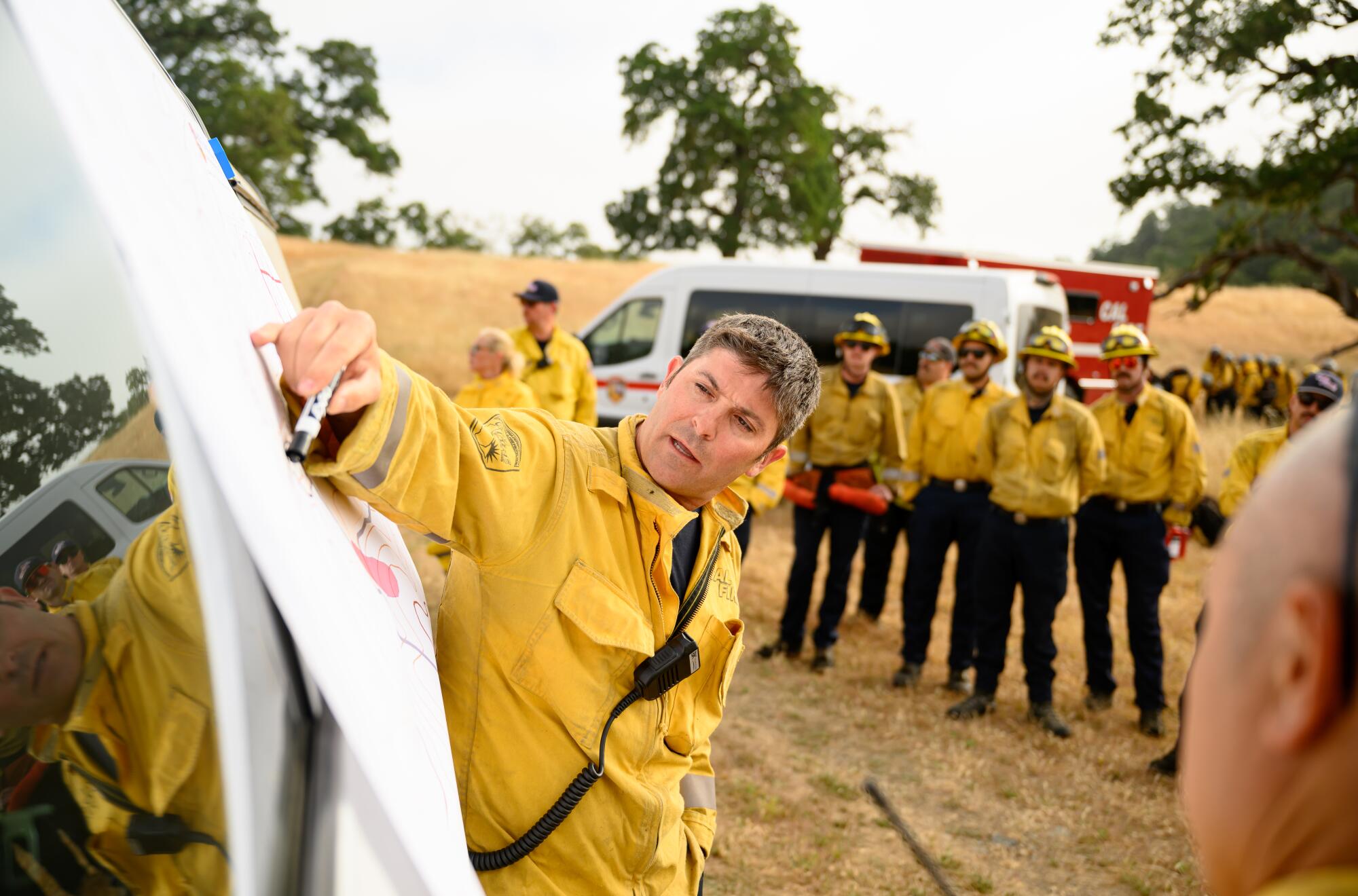
Cal Fire crew members plot out the direction and scope of a prescribed burn in Mendocino County.
(Josh Edelson / For The Times)
Nevertheless, last month, Gov. Gavin Newsom added $72 million to the state’s forest management budget to bridge some of the gap expected to be left by federal agencies. But wildfire experts say that’s just a drop in the bucket. Doing prescribed burns safely takes a lot of boots on the ground and behind-the-scenes cajoling to make sure local residents, and regulators, are on board.
Because people get pretty testy when you accidentally smoke out an elementary school or old folks home, burn plans have to clear substantial hurdles presented by the California Environmental Quality Act and air quality regulators.
It took three years to get all the required permissions for the 50-acre Hopland burn in Mendocino County, where vineyard owners worried their world-class grapes might get a little too “smoky” for most wine lovers. When the big day finally arrived in early June, more than 60 firefighters showed up with multiple fire engines, at least one bulldozer and a firefighting helicopter on standby in case anything went wrong.
They gathered at the University of California’s Hopland Research and Extension Center, where students learn about ranching and wilderness ecology.
But this was no school project. A fire that began in the surrounding hills a couple of years ago threatened to trap people in the center, so the area being burned was along the only two roads that could be used to escape.
“We’re trying to create a buffer to get out, if we need to,” said John Bailey, the center’s director. “But we’re also trying to create a buffer to prevent wildfire from coming into the center.”
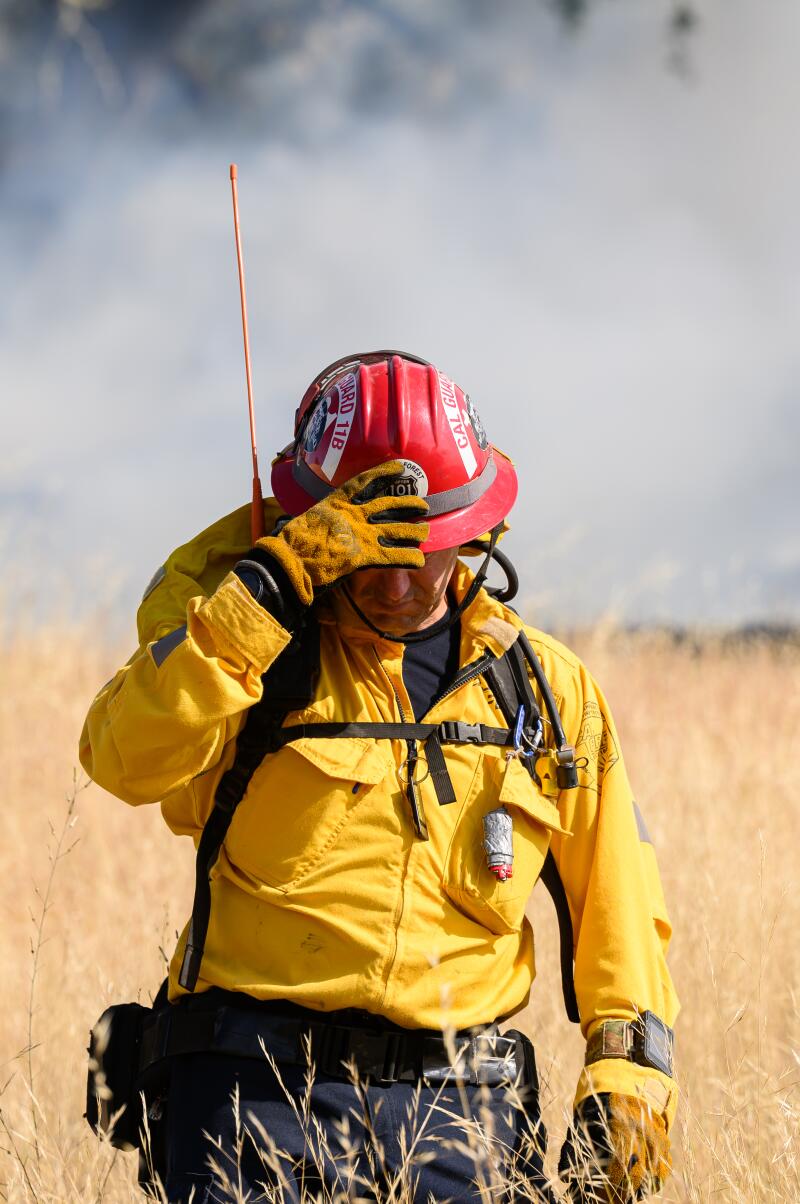

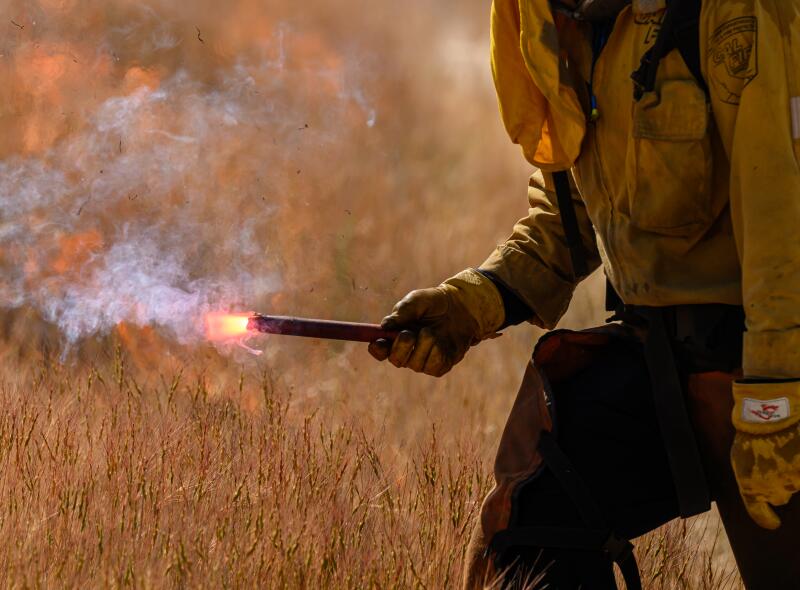
Smoke emanates from a prescribed burn in Mendocino County. (Josh Edelson / For The Times)
As the firefighters pulled on their protective yellow jackets and pants, and filled their drip torches with a mixture of diesel and gasoline, Nielson bent down and grabbed a fistful of the yellow grass. Running it through his fingers, he showed it to his deputies and they all shook their heads in disappointment — too moist.
Thick marine-layer clouds filled the sky at 7 a.m, keeping the relative humidity too high for a good scorching. In many years of covering wildfires, it was the first time I had seen firefighters looking bored and disappointed because nothing would burn.
By 8:45 a.m., the clouds cleared, the sun came out, and the grass in Nielson’s fist began to crinkle and snap. It was time to go to work.
The fire that would fill the sky and drift north that afternoon, blanketing the town of Ukiah with the familiar orange haze of fire season, began with a single firefighter walking along the edge of a cleared dirt path. As he moved, he made little dots of flame with his drip torch, drawing a line like a kid working the edges of a picture in a coloring book.
Additional firefighters worked the other edges of the field until it was encircled by strips of burned black grass. That way, no matter which direction the fire went when they set the center of the field alight, the flames would not — in most circumstances — escape the relatively small test patch.
On the uphill edge of the patch, along the top of a ridge, firefighters in full protective gear leaned against a wooden fence with their backs to the smoke and flames climbing the hill behind them. They’d all done this before, and they trusted those black strips of pre-burned grass to stop the fire before it got to them.
Their job was to keep their eyes on the downward slope on the other side of the ridge, which wasn’t supposed to burn. If they saw any embers drift past them into the “green” zone, they would immediately move to extinguish those flames.
Nielson and I were standing along the fence, too. In addition to the circle of pre-burned grass protecting us, we were on a dirt path about four feet wide. For someone with experience, that was an enormous buffer. I was the only one who even flinched when the smoke and flames came our way.
Afterward, when I confessed how panicked I had felt, Nielson said it happens to a lot of people the first time they are engulfed in smoke. It’s particularly dangerous in grass fires, because they move so fast. People can get completely disoriented, run the wrong way and “get cooked,” he said.

Grass fires are particularly dangerous, because they move so fast, says Cal Fire Staff Chief Len Nielson. People can get disoriented in the smoke, run the wrong way and “get cooked.”
(Josh Edelson / For The Times)
But that test patch was just the warmup act. Nielson and his crew were checking to make sure the fire would behave the way they expected — pushed in the right direction by the gentle breeze and following the slope uphill.
“If you’re wondering where fire will go and how fast it will move, think of water,” he said. Water barely moves on flat ground, but it picks up speed when it goes downhill. If it gets into a steep section, where the walls close in like a funnel, it becomes a waterfall.
“Fire does the same thing, but it’s a gas, so it goes the opposite direction,” Nielson said.
With that and a few other pointers — we watched as three guys drew a line of fire around the base of a big, beautiful oak tree in the middle of the hillside to shield it from what was about to happen — Nielson led me to the bottom of the hill and handed me a drip torch.
Once everybody was in position, and all of the safety measures had been put in place, he wanted me to help set the “head fire,” a 6-foot wall of flame that would roar up the hill and consume dozens of acres in a matter of minutes.
“It’s gonna get a little warm right here,” Nielson said, “but it’s gonna get warm for only a second.”
As I leaned in with the torch and set the grass ablaze, the heat was overwhelming. While everyone else working the fire seemed nonchalant, I was tentative and terrified. My right hand stretched forward to make the dots and dashes where Nielson instructed, but my butt was sticking as far back into the road as it could get.
I asked Nielson how hot he thought the flames in front of us were. “I used to know that,” he said with a shrug. “I want to say it’s probably between 800 and 1,200 degrees.”
With the hillside still burning, I peeled off all of the protective gear, hopped in a car and followed the smoke north along the 101 Freeway. By lunchtime, Ukiah, a town of 16,000 that bills itself as the gateway to the redwoods, was shrouded in haze.
Everybody smelled the smoke, but prescribed burns are becoming so common in the region, nobody seemed alarmed.
“Do it!” said Judy Hyler, as she and two friends walked out of Stan’s Maple Cafe. A veteran of the rampant destruction of wildfires from years past, she didn’t hesitate when asked how she felt about the effort. “I would rather it be prescribed, controlled and managed than what we’ve seen before.”
Politics
Randi Weingarten Quits D.N.C. Post in Dispute With Chairman

Randi Weingarten, the longtime leader of one of the nation’s most influential labor unions and a major voice in Democratic politics, has resigned from the Democratic National Committee. She pointed to disagreements with the party’s new chairman, Ken Martin.
Ms. Weingarten, the president of the American Federation of Teachers, had supported Mr. Martin’s rival in the chairmanship race early this year, Ben Wikler, the chairman of the Wisconsin Democratic Party. Mr. Martin subsequently removed Ms. Weingarten from the party’s Rules and Bylaws Committee, a powerful body that sets the calendar and process for the Democratic Party’s presidential nominating process.
In her resignation letter, dated June 5 and obtained on Sunday evening, Ms. Weingarten wrote that she would decline Mr. Martin’s offer to reappoint her to the broader national committee, on which she has served since 2002. She had been on the Rules and Bylaws committee since 2009.
“While I am proud to be a Democrat, I appear to be out of step with the leadership you are forging, and I do not want to be the one who keeps questioning why we are not enlarging our tent and actively trying to engage more and more of our communities,” Ms. Weingarten wrote in her resignation letter to Mr. Martin.
Ms. Weingarten is an influential figure in the Democratic Party and the leader of a union that counts 1.8 million members.
Mr. Martin has recently faced scrutiny and criticism from within the party. His leadership was openly challenged by David Hogg, a party vice chairman who announced he would fund primary challenges to sitting Democrats — an action long considered out of bounds for top party officials.
Mr. Hogg announced last week that he would not seek to retain his post after the party voted to redo the vice chair election, after it had been challenged on an unrelated technicality.
Notably, Ms. Weingarten had endorsed Mr. Hogg’s efforts, saying it was necessary to “ruffle some feathers.”
On Friday, during an appearance at the Center for American Progress in Washington, Gov. Tim Walz of Minnesota, a longtime Martin ally, said he still had confidence in him but regretted the public squabbling.
“I certainly wished we wouldn’t have dirty laundry in public, but you know the personalities, things happen,” said Mr. Walz, who endorsed both Mr. Martin and Mr. Hogg in the party elections this year. “I don’t think Ken’s focus has shifted one bit on this of expanding the party.”
Mr. Martin and a party spokeswoman did not immediately respond to messages about Ms. Weingarten’s resignation.
-

 West1 week ago
West1 week agoBattle over Space Command HQ location heats up as lawmakers press new Air Force secretary
-

 Technology1 week ago
Technology1 week agoThere are only two commissioners left at the FCC
-

 News1 week ago
News1 week agoA former police chief who escaped from an Arkansas prison is captured
-

 Technology1 week ago
Technology1 week agoXbox console games are suddenly showing up inside the Xbox PC app
-
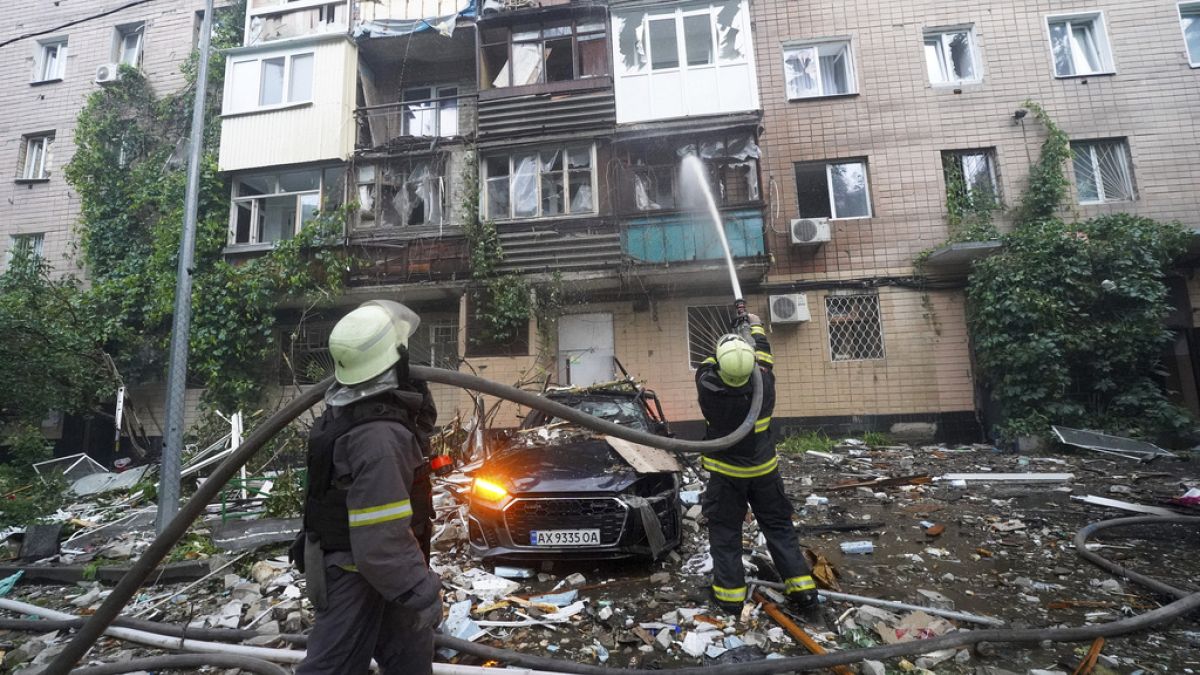
 World1 week ago
World1 week agoUkraine: Kharkiv hit by massive Russian aerial attack
-

 News1 week ago
News1 week agoMajor union boss injured, arrested during ICE raids
-

 World1 week ago
World1 week agoColombia’s would-be presidential candidate shot at Bogota rally
-

 Technology1 week ago
Technology1 week agoMassive DMV phishing scam tricks drivers with fake texts














